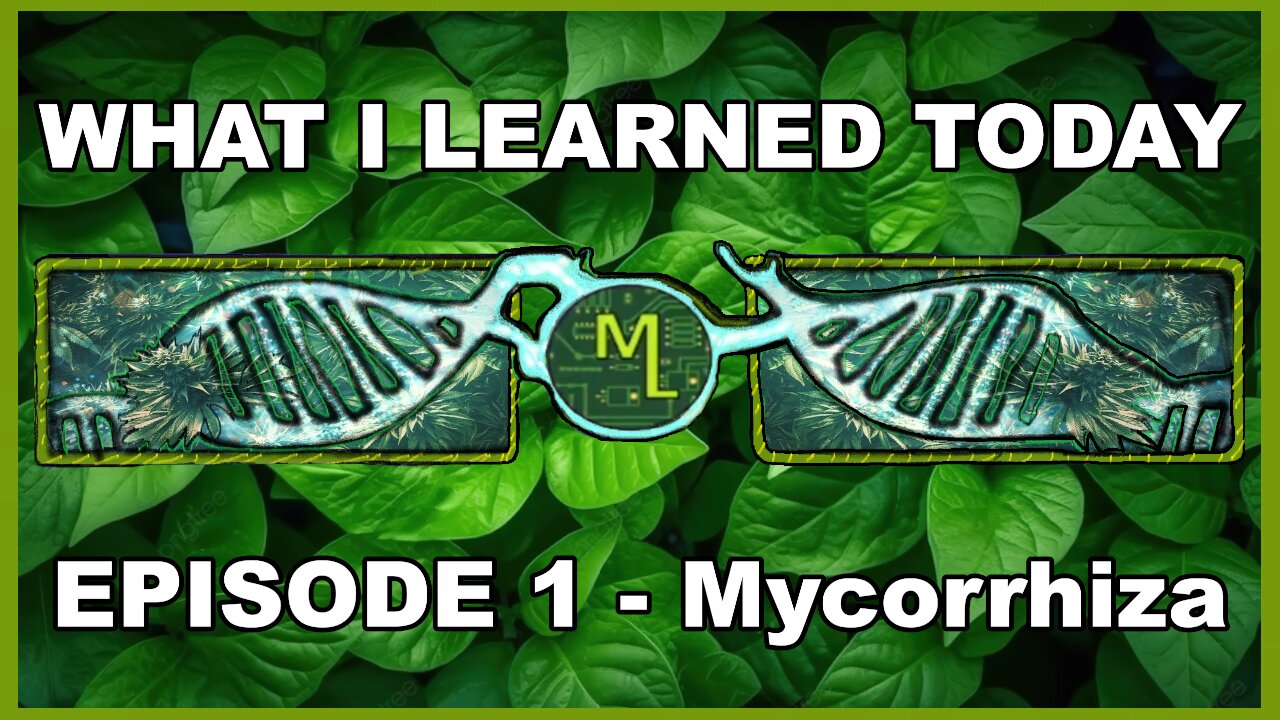Premium Only Content

MadLabZ - What I learned Today Series - Episode 1
MadLabZ - What I learned Today Series - Episode 1
Introduction to Trifecta's MYCO Supreme and the amazing symbiotic relationship of mycorrhizal fungi.
Trifecta's MYCO Supreme - www.trifectanatural.com
Rhizophagus irregularis, formerly known as Glomus intraradices, is a species of arbuscular mycorrhizal fungus (AMF). Arbuscular mycorrhizal fungi form symbiotic relationships with the roots of most vascular plants, including many agricultural crops and trees. The association between plants and these fungi is known as mycorrhiza, and it is a mutually beneficial relationship.
Here are key points about Rhizophagus irregularis:
Symbiotic Relationship:
Rhizophagus irregularis establishes a symbiotic relationship with the roots of plants. In this partnership, the fungus colonizes the plant roots and forms specialized structures called arbuscules and vesicles within the root cells. These structures facilitate the exchange of nutrients between the fungus and the plant.
Nutrient Exchange:
The primary role of Rhizophagus irregularis is to enhance nutrient uptake for the host plant. The fungus extends its mycelium into the surrounding soil, greatly expanding the root's ability to absorb water and nutrients, particularly phosphorus and nitrogen. In return, the plant provides the fungus with carbohydrates produced through photosynthesis.
Widespread Distribution:
Rhizophagus irregularis is widely distributed in various soil types and ecosystems, and it has been found in association with a diverse range of plant species. Its ubiquity and ability to form symbiotic relationships with different plants make it an essential component of many terrestrial ecosystems.
Beneficial for Agriculture:
In agriculture, the use of arbuscular mycorrhizal fungi like Rhizophagus irregularis is of particular interest. These fungi can enhance plant growth, increase nutrient uptake efficiency, and improve the overall resilience of plants to environmental stress. As a result, they have the potential to contribute to sustainable and environmentally friendly agricultural practices.
Taxonomy:
The classification of this fungus has undergone changes, and it is now officially recognized as Rhizophagus irregularis. Taxonomic revisions are common in the scientific community as our understanding of organisms evolves based on genetic and morphological studies.
Understanding the role of Rhizophagus irregularis in mycorrhizal symbiosis is crucial for advancing agricultural practices and gaining insights into the complex relationships that support plant health and ecosystem functioning.
-
 LIVE
LIVE
Wendy Bell Radio
6 hours agoYou Realize We Voted For This.
6,431 watching -
 26:00
26:00
Neil McCoy-Ward
4 hours agoAnd So It Begins… ('Carbon' Food Quotas Are HERE)
14.6K6 -
 LIVE
LIVE
The Big Mig™
3 hours agoWTF? Letitia James & James Comey Charges Dropped
2,755 watching -
 1:09:24
1:09:24
Chad Prather
17 hours agoWe Must Obey God: The Gospel That Cannot Be Silenced
78.6K26 -
 1:04:27
1:04:27
The Mike Schwartz Show
2 hours agoTHE MIKE SCHWARTZ SHOW with DR. MICHAEL J SCHWARTZ 11-25-2025
10.4K6 -
 4:50
4:50
Captain Peach
6 days ago $7.18 earned5 Ways Game Trailers Lie
62.3K4 -
 18:06
18:06
We Got Receipts
20 hours agoLatest EBT Meltdowns That Are Actually Funny!
33.6K27 -
 42:00
42:00
Based Campwith Simone and Malcolm
4 days agoNYT Brands Divorce as the Cool New Trend for Gen Z Girls
37K8 -
 11:43
11:43
VSOGunChannel
22 hours ago $3.96 earnedThe Gun Control the Trump Admin is Fighting For
27.3K20 -
 1:03:30
1:03:30
A Cigar Hustlers Podcast Every Day
1 day agoEpisode 416 Epstein Files w/Matt Booth
34.9K